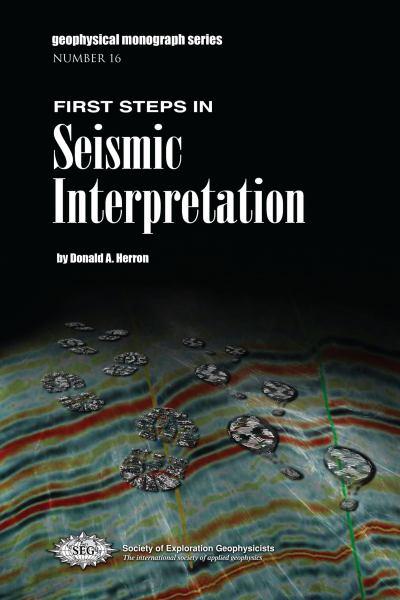Review: First Steps in Seismic Interpretation
/ Thomas Martin is a first-year graduate student at Scripps Institution of Oceanography. He got bored of waiting for us to review the seismic interpretation books (we are tectonically slow sometimes) and offered to review some for us. Thank you, Thomas! He's just about to set off on a research cruise to the Canadian Arctic on USCGC Healy to collect CHIRP seismic reflection data and sediment cores.
Thomas Martin is a first-year graduate student at Scripps Institution of Oceanography. He got bored of waiting for us to review the seismic interpretation books (we are tectonically slow sometimes) and offered to review some for us. Thank you, Thomas! He's just about to set off on a research cruise to the Canadian Arctic on USCGC Healy to collect CHIRP seismic reflection data and sediment cores.
 Herron, D (2012). First Steps in Seismic Interpretation. Geophysical Monograph Series 16. Society of Exploration Geophysicists, Tulsa, OK. Print ISBN 978-156080280-8. Ebook DOI 10.1190/1.9781560802938. List price: USD62. Member price: USD49. Student price: USD39.20
Herron, D (2012). First Steps in Seismic Interpretation. Geophysical Monograph Series 16. Society of Exploration Geophysicists, Tulsa, OK. Print ISBN 978-156080280-8. Ebook DOI 10.1190/1.9781560802938. List price: USD62. Member price: USD49. Student price: USD39.20
As a graduate student, this book has become quite the resource for me. It gives a good handle on basic seismic properties, and provides a solid introduction. Some of the topics it covers are not typically discussed in a geoscience journal papers that use seismic reflection data (migration comes to mind). The table of contents gives an idea of the breadth:
- Introduction
- Seismic response
- Seismic attributes — including subsections on amplitude, coherence, and inversion
- Velocity — sonic logs, well velocity surveys, seismic velocities, anisotropy, and depth conversion
- Migration
- Resolution
- Correlation concepts — horizons and faults, multiples, pitfalls, automatic vs manual picking
- Correlation procedures — loop tying, jump correlations, visualization
- Data quality and management — keeping track of everything
- Other considerations — e.g. 4D seismic, uncertainty and risk, and ergonomics
One of the great things about this book is that it's designed to be light on math, so all levels of geoscientists can pick it up. I have found this book invaluable because it is a great bridge from the 'pure' geophysicist to the seismic interpreter, and can improve the dialogue between these two camps. Chapter 10 is 'leftover' subjects, but it is one of the most helpful in the book as it covers approximations, career development, and a fantastic section on time spent and value added.
The book covers a lot of ground but, with the book coming in at under 200 pages, nothing in detail — this is not meant to be the ultimate text for seismic interpretation. I think the book is a little light for nearly $40 plus shipping, however (student price; the list price is over $60). I would recommend it to graduate students or early career scientists with an interest in seismic data, across the full range of geoscience disciplines. The price for a student is high for a small paperback book under 200 pages, but the content is worth it.
If you liked this review please leave an encouraging comment for Thomas.








 Except where noted, this content is licensed
Except where noted, this content is licensed